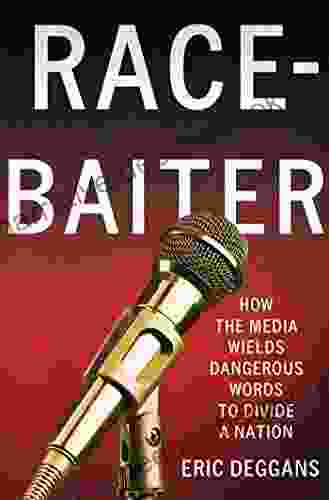Organizational Behavior in Sport Management: Understanding Team Dynamics, Leadership Styles, and Employee Motivation


Organizational behavior is a crucial aspect of sport management, as it influences the performance, productivity, and overall success of sports organizations. Understanding how individuals and teams behave within these organizations is essential for effective leadership, employee motivation, and the creation of a positive work environment. This article explores the key concepts of organizational behavior in sport management, including team dynamics, leadership styles, and employee motivation.
5 out of 5
| Language | : | English |
| File size | : | 1515 KB |
| Text-to-Speech | : | Enabled |
| Screen Reader | : | Supported |
| Enhanced typesetting | : | Enabled |
| Word Wise | : | Enabled |
| Print length | : | 407 pages |
| Lending | : | Enabled |
Team Dynamics
Team dynamics refer to the interactions and relationships among members of a team. In sport management, understanding team dynamics is crucial for building cohesive and high-performing teams. Several factors influence team dynamics, including:
- Team Size and Composition: The size and composition of a team can impact team dynamics. Larger teams tend to have more complex dynamics, while smaller teams may be more cohesive. The diversity of team members in terms of skills, backgrounds, and personalities also affects team dynamics.
- Team Goals: The goals of a team can influence team dynamics. Teams with clear and shared goals tend to be more motivated and productive. However, conflicts can arise if team goals are unclear or if individual goals conflict with team goals.
- Team Roles: Each member of a team typically plays specific roles, such as leader, facilitator, or problem-solver. Understanding these roles and ensuring that they are effectively filled is essential for optimal team performance.
- Communication: Effective communication is vital for maintaining positive team dynamics. Open and clear communication fosters trust, collaboration, and problem-solving among team members.
Leadership Styles
Leadership is a key component of organizational behavior in sport management. Different leadership styles can have a significant impact on team dynamics and employee motivation. Common leadership styles include:
- Autocratic Leadership: Autocratic leaders make decisions and give orders without consulting team members. This style can be effective in situations requiring quick decision-making, but it can also stifle creativity and employee involvement.
- Democratic Leadership: Democratic leaders involve team members in decision-making and encourage their input. This style fosters collaboration and employee empowerment, but it can also be time-consuming and may not be suitable for situations requiring immediate action.
- Laissez-Faire Leadership: Laissez-faire leaders give team members a great deal of autonomy and freedom. This style can be effective with highly motivated and experienced teams, but it can also lead to lack of direction and poor performance if not managed effectively.
- Transformational Leadership: Transformational leaders inspire and motivate team members to perform beyond their perceived capabilities. This style focuses on building strong relationships, fostering innovation, and creating a shared vision for the team.
Employee Motivation
Employee motivation is crucial for organizational effectiveness in sport management. Motivated employees are more productive, engaged, and committed to their work. Several theories and models explain employee motivation, including:
- Maslow's Hierarchy of Needs: This theory suggests that individuals are motivated by five levels of needs: physiological, safety, love and belonging, esteem, and self-actualization. Managers can motivate employees by meeting these needs through rewards and recognition.
- Herzberg's Two-Factor Theory: This theory distinguishes between hygiene factors (e.g., salary, working conditions) and motivation factors (e.g., challenging work, recognition). Hygiene factors prevent dissatisfaction, while motivation factors drive employee performance.
- Goal-Setting Theory: This theory suggests that employees are motivated by challenging but achievable goals. Managers should set specific, measurable, attainable, relevant, and time-bound (SMART) goals for their employees.
- Expectancy Theory: This theory suggests that employee motivation is influenced by their expectations of success, the value of the reward, and the probability of receiving the reward. Managers can motivate employees by increasing their expectations of success and the perceived value of rewards.
Organizational behavior in sport management is a complex and multifaceted field that encompasses team dynamics, leadership styles, and employee motivation. Understanding these concepts is essential for creating a positive work environment, building cohesive teams, and achieving organizational success. Sport managers who leverage their knowledge of organizational behavior can effectively lead, motivate, and empower their employees to perform at their best and contribute to the overall success of their organizations.
Author Bio: [Author's Name] is a renowned expert in organizational behavior and sport management. With years of experience in research and consulting, [Author's Name] empowers sport managers to optimize team performance, foster employee motivation, and create high-performing sport organizations.
5 out of 5
| Language | : | English |
| File size | : | 1515 KB |
| Text-to-Speech | : | Enabled |
| Screen Reader | : | Supported |
| Enhanced typesetting | : | Enabled |
| Word Wise | : | Enabled |
| Print length | : | 407 pages |
| Lending | : | Enabled |
Do you want to contribute by writing guest posts on this blog?
Please contact us and send us a resume of previous articles that you have written.
 Chapter
Chapter Text
Text Genre
Genre E-book
E-book Magazine
Magazine Paragraph
Paragraph Sentence
Sentence Glossary
Glossary Synopsis
Synopsis Annotation
Annotation Scroll
Scroll Codex
Codex Bestseller
Bestseller Library card
Library card Biography
Biography Memoir
Memoir Reference
Reference Encyclopedia
Encyclopedia Dictionary
Dictionary Narrator
Narrator Character
Character Resolution
Resolution Librarian
Librarian Catalog
Catalog Borrowing
Borrowing Archives
Archives Periodicals
Periodicals Study
Study Research
Research Scholarly
Scholarly Reserve
Reserve Academic
Academic Reading Room
Reading Room Special Collections
Special Collections Dissertation
Dissertation Awards
Awards Reading List
Reading List Book Club
Book Club Theory
Theory Textbooks
Textbooks Elaina Jadin
Elaina Jadin Lindsay Jayne Ashford
Lindsay Jayne Ashford Fin Goulding
Fin Goulding Katie Startzman
Katie Startzman Arabella Stanger
Arabella Stanger Daniel Glattauer
Daniel Glattauer John R Clark
John R Clark Barb Asselin
Barb Asselin William Anderson
William Anderson Carla Shedd
Carla Shedd Jeremy Slack
Jeremy Slack Rae Lewis
Rae Lewis Jennie Magiera
Jennie Magiera Simon Ward
Simon Ward Lauren Lashley
Lauren Lashley John Shelby
John Shelby Alexandre Maral
Alexandre Maral Michael Heatley
Michael Heatley Nancy Gordon
Nancy Gordon Rhys Bezzant
Rhys Bezzant
Light bulbAdvertise smarter! Our strategic ad space ensures maximum exposure. Reserve your spot today!
 Billy PetersonFollow ·6.3k
Billy PetersonFollow ·6.3k Jeffrey CoxFollow ·3.3k
Jeffrey CoxFollow ·3.3k Ricky BellFollow ·15.5k
Ricky BellFollow ·15.5k Enrique BlairFollow ·15.6k
Enrique BlairFollow ·15.6k Ernesto SabatoFollow ·19.5k
Ernesto SabatoFollow ·19.5k Carlos FuentesFollow ·11.2k
Carlos FuentesFollow ·11.2k Derrick HughesFollow ·3.3k
Derrick HughesFollow ·3.3k D'Angelo CarterFollow ·8.1k
D'Angelo CarterFollow ·8.1k

 Dallas Turner
Dallas TurnerParasols and Peril: Adventures in Grace
In the quaint town...

 Caleb Carter
Caleb CarterFlight Attendant Joe: A Dedicated Professional in the...
Flight Attendant Joe...

 Jerry Ward
Jerry WardPick Lottery The List For 23 States August 15 2024
The Pick Lottery is a multi-state lottery...

 Hudson Hayes
Hudson HayesHow the Media Wields Dangerous Words to Divide a Nation
In a world where the media is...

 Curtis Stewart
Curtis StewartThe Magic Mala: A Story That Changes Lives
In the realm of ancient traditions and...

 Raymond Parker
Raymond ParkerEarthly Meditations: A Poetic Tapestry of Nature,...
In the realm of contemporary...
5 out of 5
| Language | : | English |
| File size | : | 1515 KB |
| Text-to-Speech | : | Enabled |
| Screen Reader | : | Supported |
| Enhanced typesetting | : | Enabled |
| Word Wise | : | Enabled |
| Print length | : | 407 pages |
| Lending | : | Enabled |












